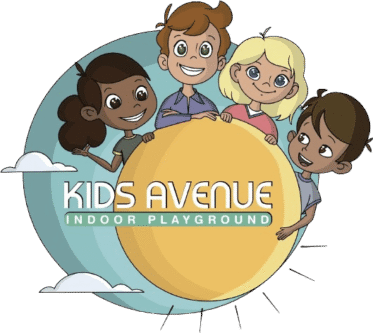Sensory play is one of the most powerful tools for early childhood development. For young learners, especially toddlers, the world is full of textures, sounds, colors, shapes, and movements waiting to be explored. Engaging in sensory play for toddlers allows children to process information, strengthen their motor skills, boost cognitive development, and build emotional intelligence.
Today’s parents are increasingly seeking environments where children can learn through discovery — and this is where sensory activities in indoor playground environments truly shine. Indoor playgrounds provide safe, controlled, and enriching spaces that allow children to explore through touch, movement, sound, and imagination without the limitations of weather or safety concerns.
Why Sensory Play Matters in Early Childhood
During the earliest years, a child’s brain is rapidly forming neural connections. Sensory play directly engages these developing pathways. Whether a toddler squeezes soft foam blocks, crawls through tunnels, splashes in a water table, or digs through sensory bins — each action strengthens the brain’s ability to understand the world.
Some key benefits include:
1. Enhances Cognitive Development
Sensory engagement encourages curiosity and problem-solving. When children investigate how objects move, sound, or react, they build foundational science and reasoning skills.
2. Boosts Fine and Gross Motor Skills
Activities like climbing, jumping, balancing, and grasping help toddlers develop stronger muscles and coordination — essential for walking, writing, self-feeding, and independence.
3. Encourages Language and Communication
When kids play, they naturally express themselves. Sensory-rich environments encourage toddlers to describe objects, textures, and actions, supporting speech and vocabulary growth.
4. Promotes Emotional Regulation
Sensory play helps children manage emotions and self-soothe. A calm, engaging environment helps reduce stress, frustration, and overstimulation.
5. Builds Social Skills
Toddlers learn to share space, collaborate, wait for their turn, and practice kindness — all essential for school readiness.
How Indoor Playgrounds Support Sensory Learning
Indoor playgrounds offer structured yet playful spaces where children can safely explore sensory environments designed specifically for their developmental needs.
When families visit the Birthday packages page, for example, they can see how indoor playgrounds integrate sensory-rich elements into every event. Sensory play makes celebrations more engaging and educational for children of all ages.
From soft play zones to climbing walls, interactive panels, and themed activity corners, indoor playgrounds combine learning and fun in ways that are both safe and stimulating.
Dedicated Sensory Areas in the North Hollywood Facility
Parents exploring our North Hollywood Location will find curated sensory sections designed with toddlers in mind. These may include tactile walls, color-changing lights, soft mats, foam structures, and themed zones meant to engage the senses in gentle, guided ways.
These spaces ensure toddlers explore textural variety in a safe and controlled setting, helping build their confidence and sensory processing abilities.
Sensory Play in Northridge: More Than Just Fun
At our Northridge Location, sensory play is integrated into nearly every play element. Motion-based equipment, sensory tunnels, ball pits, interactive panels, and climbing structures help develop tactile awareness, spatial understanding, and balance.
Parents seeking meaningful experiences for their toddlers will find the Northridge space ideal for building developmental skills while ensuring fun-filled, active playtime.
Why Sensory Play Should Be Part of Every Toddler’s Routine
Boosts Early Learning
Toddlers learn best when they can touch, feel, move, and experiment. Sensory play encourages independent thinking, curiosity, and mental development.
Supports Flexible Thinking
When children interact with sensory materials, they learn that the same object can have multiple uses — boosting creativity, imagination, and decision-making.
Improves Balance & Coordination
Crawling through tunnels, climbing soft ramps, and exploring obstacle paths to build physical confidence and awareness.
Encourages Independence
Toddlers feel empowered when they explore at their own pace, choose activities, and experiment with their surroundings.
The Role of Sensory Play in Birthday Celebrations
Parents exploring our North Hollywood Birthday Package will find that sensory-rich setups make parties more engaging for young children. Activities like soft climbing, tactile games, and interactive play zones keep children active and entertained throughout the celebration.
Similarly, the Northridge Birthday Package includes sensory-focused sections ideal for toddlers and preschoolers — ensuring structured fun in a safe indoor environment.
Sensory play blends fun with development, creating parties that are memorable, inclusive, and beneficial.
Why Indoor Playgrounds Are the Best Choice for Sensory Activities
Indoor playgrounds provide:
- A controlled environment with no weather interruptions
- Clean, cushioned surfaces ideal for toddler safety
- Age-appropriate equipment designed for motor & sensory development
- Educational yet playful setups
- Structured sensory learning areas
For sensory engagement, indoor playgrounds offer consistency and safety that outdoor environments often lack.
Final Thoughts
Sensory play is not just entertainment — it is essential for cognitive, physical, social, and emotional development. Whether families visit daily play or special celebrations, indoor playgrounds create an environment that nurtures curiosity, learning, and joy.
To explore our toddler-friendly sensory play areas or plan your next celebration, visit us today.
Ready to give your child the perfect sensory-rich play experience?
Get in touch to explore our indoor playgrounds or reserve your next unforgettable celebration.
FAQs
1. What is sensory play and why is it important?
Sensory play involves activities that stimulate a child’s senses — touch, sound, sight, movement, and balance. It boosts cognitive development, motor skills, and emotional growth.
2. Are indoor playgrounds good for sensory play?
Yes. Indoor playgrounds provide safe, well-designed environments where children can experience sensory-rich activities without weather or safety concerns.
3. Is sensory play suitable for toddlers?
Absolutely. Toddlers benefit greatly from structured sensory activities that help with language, motor development, and emotional regulation.
4. How does sensory play help with social development?
It encourages interaction, sharing, communication, and teamwork. These skills help prepare children for preschool and group learning.
5. Can sensory activities be part of a birthday celebration?
Yes! Indoor playground party setups often include sensory zones, making celebrations more fun, interactive, and developmentally beneficial.
